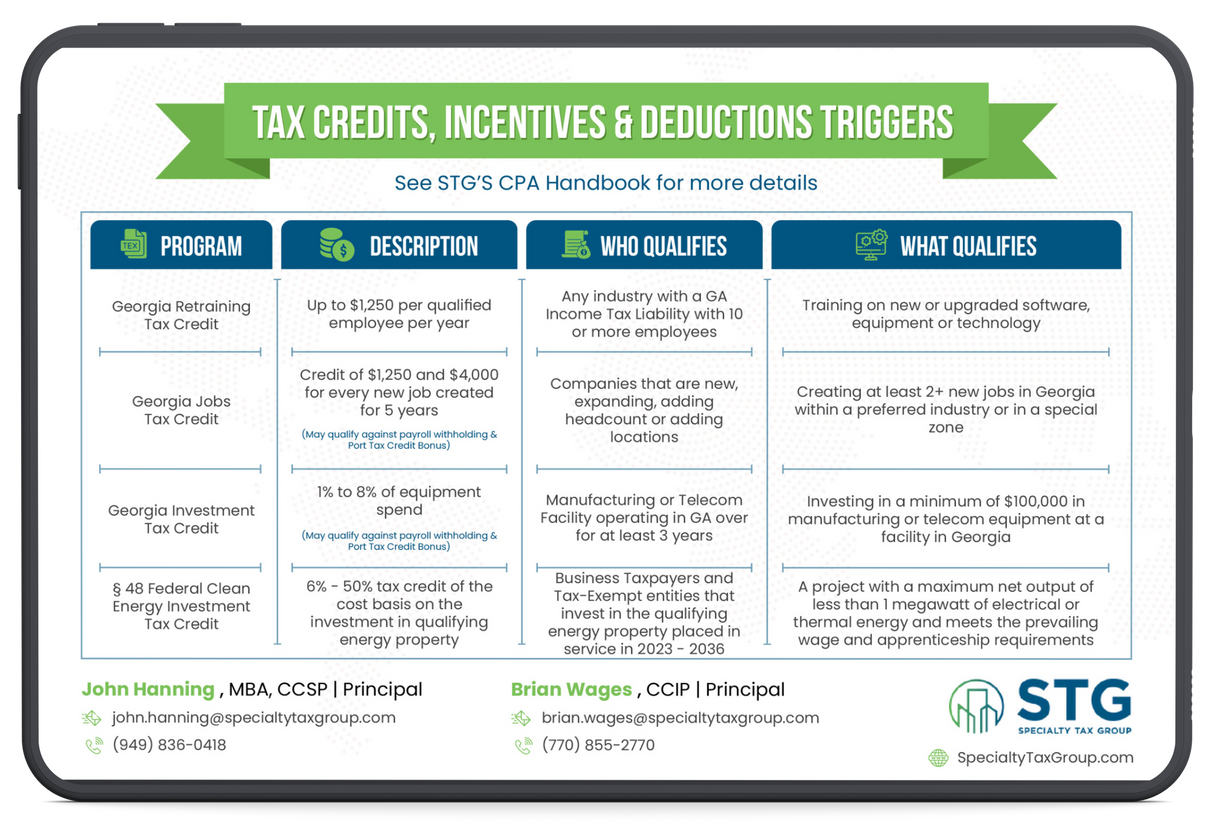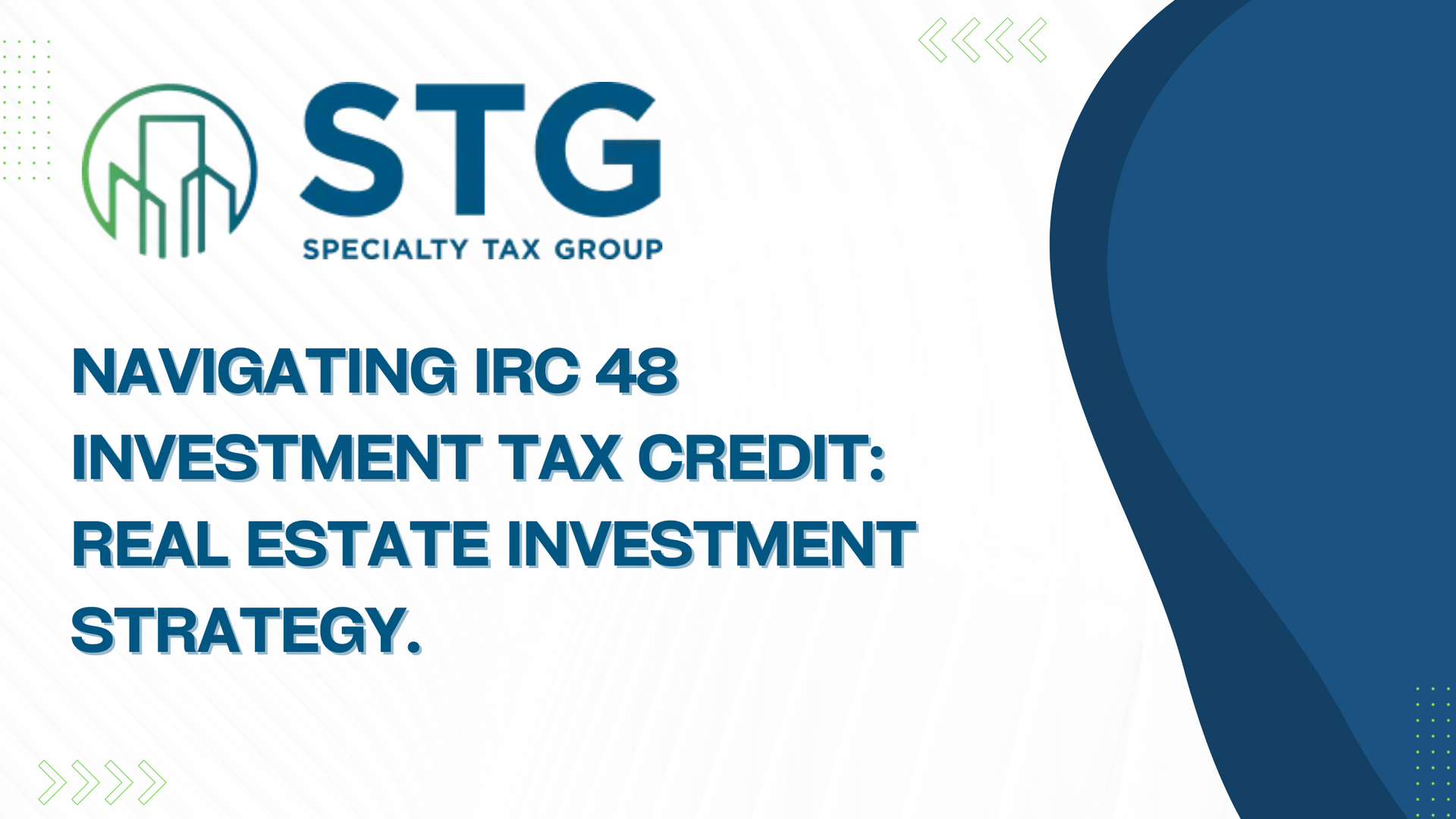This blog post has been researched, edited, and approved by John Hanning and Brian Wages. Join our newsletter below.
Newsletter Form

Businesses can lower their tax liability and increase their ROI on assets and qualified properties by utilizing different types of allowable depreciation. Depreciation is considered an expense used to reduce an asset's value within a business. It's an estimation rather than an explicit expense and can be applied to equipment, machinery, vehicles, and other business property that wears over time.
What is Depreciation?
Depreciation refers to an annual income tax deduction that allows businesses to recover the cost or other basis of certain property over the time they use the property. The tax depreciation is spread out over 3, 5, and 7-year property for short-life assets. Long-life property is depreciated over a more extended period - residential rental properties over 27.5 years and commercial buildings over 39 years. Land is not depreciable, but sidewalks, landscaping, or other land improvements may be written off over 10, 15, or 20 years depending on the asset.
Types of Depreciation
For businesses to make important decisions about the depreciation of their assets, it's important to know the common methods used to calculate depreciation.
- Straight Line Depreciation – The most common and simplest method for determining depreciation is a simple formula called straight-line depreciation. This method is best used for equipment that loses value steadily over time and is spread out evenly over the accounting period.
(Cost of an asset – Scrap value of an asset) / Useful life of an asset
- Declining Balance – The declining balance method is an accelerated depreciation method where an asset is depreciated using the depreciation rate.
(Asset value x depreciation rate)
- Double Declining Balance Depreciation – Double declining balance depreciation is an accelerated method that deals with more productive assets in their early years.
(Asset Value / Life of asset = Depreciation rate) x 2
- Sum-of-the-Years’-Digits (SYD) Depreciation – Compared to the straight-line depreciation method, the sum-of-the-years’-digits method results in greater depreciation in the earlier years of an asset's useful life and less in the later years.
(Remaining life of an asset / Sum of the years' remaining digits) x (Cost of an asset – Scrap value of an asset) = Depreciation expense
Bonus Depreciation Phase-Down
The bonus depreciation percentage, which allows businesses to immediately deduct a percentage of qualifying asset costs, began phasing down in 2023:
- 80% for property placed in service after December 31, 2022 and before January 1, 2024
- 60% for property placed in service after December 31, 2023 and before January 1, 2025
- 40% for property placed in service after December 31, 2024 and before January 1, 2026
- 20% for property placed in service after December 31, 2025 and before January 1, 2027
Bonus depreciation is scheduled to expire after 2026 unless Congress acts to extend it.
Section 179 Expensing Limits
For 2023, the maximum Section 179 deduction increased to $1,160,000, phasing out when total qualifying property exceeds $2,890,000.
These updates reflect the current depreciation rules as of Decemebr 2023. Laws frequently change, so consult a tax professional for the latest information. Specialty Tax Group can help identify savings and refund opportunities tailored to your business. Contact us to discuss how we can reduce your tax liability.
Specialty Tax Group can partner with your business’s tax team to help you identify unique and beneficial tax savings and refund opportunities. With our extensive team of knowledgeable professionals, we work to create fully developed and comprehensive solutions tailored to each client.
Contact us today to discuss how our team can help you.





